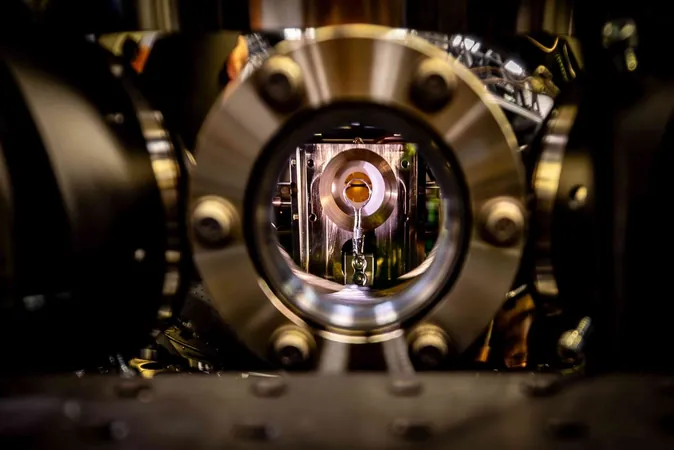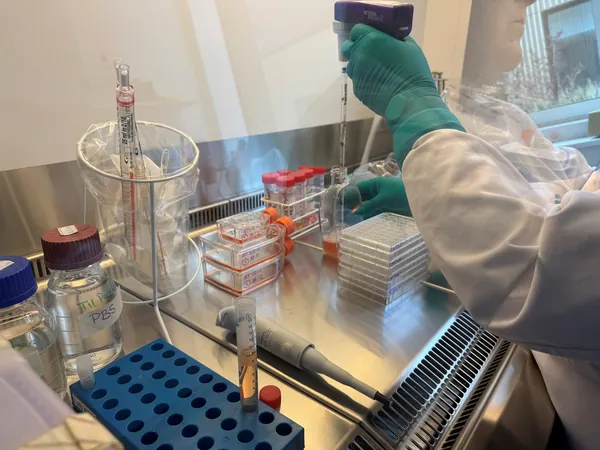
Revolutionizing Science: A Powerful One-Atom Quantum Computer Simulates Molecules in Real Time!
2025-05-20
Author: Jia
Imagine a world where molecules dance and transform at lightning speed—this is the reality that unfolds when they absorb light. As electrons leap between energy levels and atoms vibrate, incredible quantum-mechanical changes happen in millionths of a billionth of a second, powering everything from photosynthesis in plants to innovations in solar energy and groundbreaking cancer treatments.
But simulating these rapid and complex chemical interactions has remained a formidable challenge for traditional computers, which lack the computational prowess needed to mimic such intricate behaviors. Enter quantum computers—machines that inherently utilize quantum mechanics, making them prime instruments for unraveling the mysteries of chemistry.
Up until now, quantum computers have primarily calculated static scenarios, such as the energy of molecules, but a groundbreaking study recently published in the Journal of the American Chemical Society showcases an exciting leap forward: researchers successfully modeled how real molecules dynamically change over time after absorbing light.
How It Was Done: A Trapped-Ion Quantum Computer!
The team utilized a cutting-edge trapped-ion quantum computer, which manipulates individual atoms trapped in a vacuum chamber using electromagnetic fields. While traditional quantum computers generally rely on quantum bits (qubits), this innovative approach incorporates the vibrational movements of atoms, termed 'bosonic modes,' creating a powerful 'mixed qudit-boson simulation.' This dramatically simplifies the required size and complexity of the quantum computer needed to simulate molecular behavior.
The researchers focused on three intriguing molecules—allene, butatriene, and pyrazine—all renowned for their complex electronic and vibrational interactions after light absorption. Amazingly, they were able to slow down these processes by a factor of 100 billion—transforming ultrafast femtoseconds into milliseconds, which allowed for detailed observation and analysis.
A Game-Changer in Quantum Efficiency!
The implications of this work are monumental, showcasing a quantum simulation performed with just a single atom, rather than the staggering amounts of qubits that would be required by standard quantum methods. Where traditional approaches would need 11 qubits and countless operations—far beyond what's feasible today—this method stands as a million times more resource-efficient!
Moreover, the researchers ventured into 'open-system' dynamics, examining how molecules interact with their environments—a notoriously tricky task for classical computers. By introducing controlled noise into the ion's surroundings, they successfully simulated how molecules lose energy, proving that even environmental complexities are manageable through quantum simulation.
What Lies Ahead?
This pioneering work marks a significant milestone in the realm of quantum chemistry. While existing quantum devices may still be limited in scope, the methods developed here illuminate the path forward, suggesting that small, strategically designed experiments can address pressing scientific challenges.
As we advance to experimenting with 20 to 30 ions, the potential for quantum simulations to tackle increasingly complex chemical systems emerges—sparking possibilities for rapid advancements in drug development, clean energy solutions, and an enhanced understanding of the fundamental chemical processes that sustain life itself!



 Brasil (PT)
Brasil (PT)
 Canada (EN)
Canada (EN)
 Chile (ES)
Chile (ES)
 Česko (CS)
Česko (CS)
 대한민국 (KO)
대한민국 (KO)
 España (ES)
España (ES)
 France (FR)
France (FR)
 Hong Kong (EN)
Hong Kong (EN)
 Italia (IT)
Italia (IT)
 日本 (JA)
日本 (JA)
 Magyarország (HU)
Magyarország (HU)
 Norge (NO)
Norge (NO)
 Polska (PL)
Polska (PL)
 Schweiz (DE)
Schweiz (DE)
 Singapore (EN)
Singapore (EN)
 Sverige (SV)
Sverige (SV)
 Suomi (FI)
Suomi (FI)
 Türkiye (TR)
Türkiye (TR)
 الإمارات العربية المتحدة (AR)
الإمارات العربية المتحدة (AR)